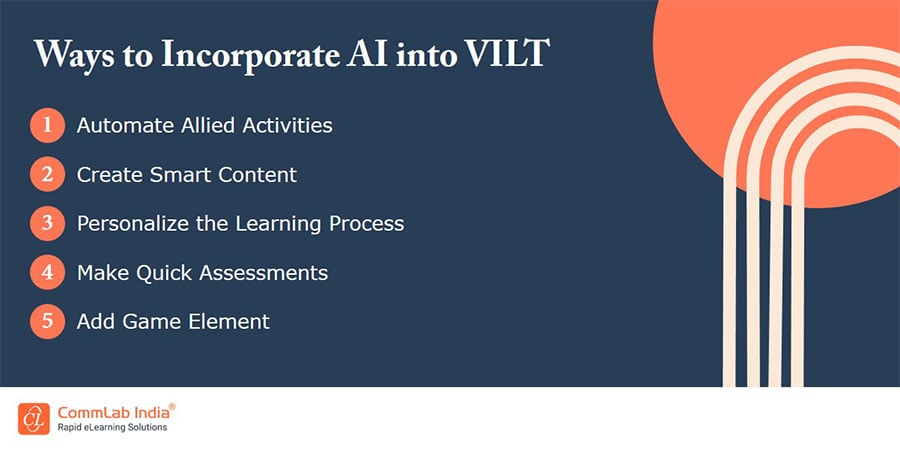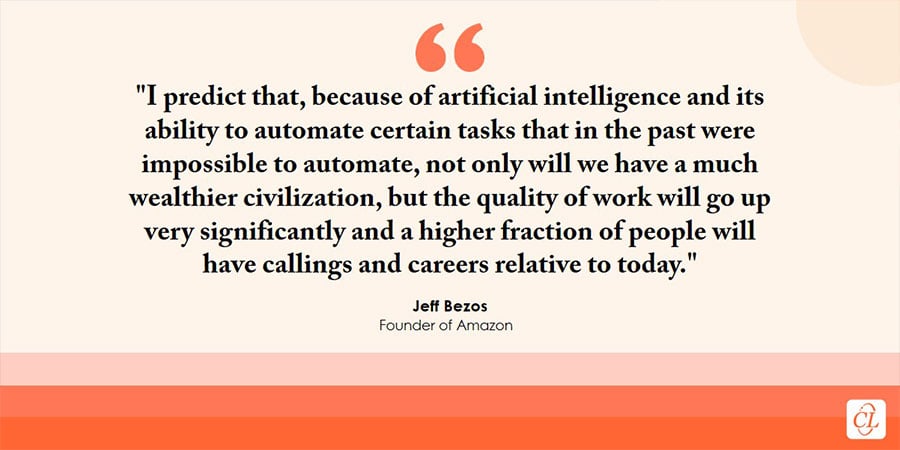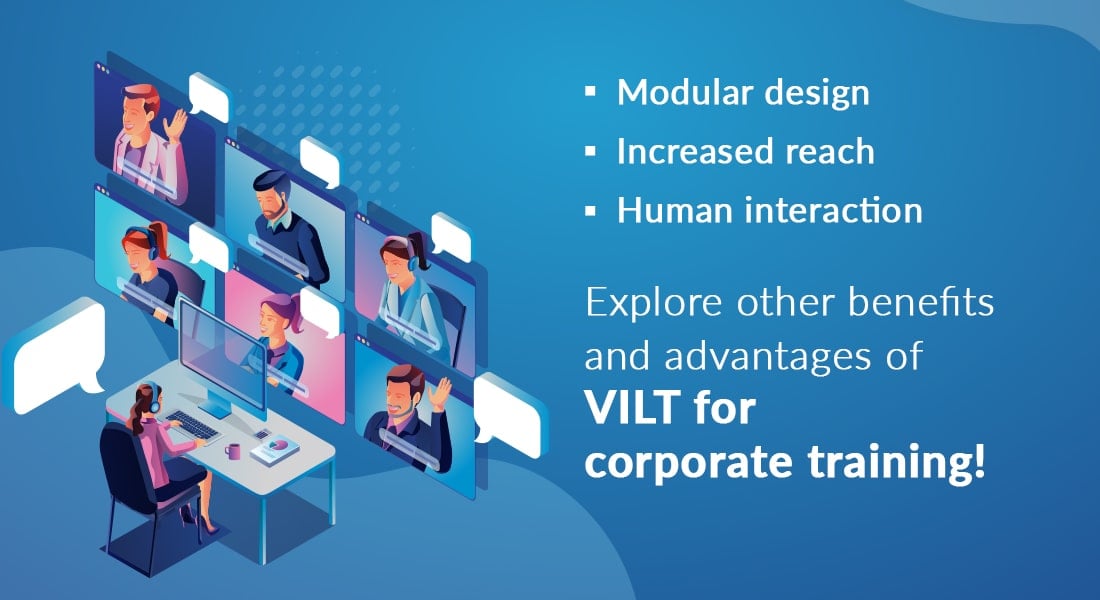5 Amazing Ways to Incorporate AI in VILT for Effective Learning
AI is revolutionizing different aspects of the L&D. In this blog, we will discuss ways of incorporating AI into virtual instructor-led training (VILT).

Virtual instructor-led training is a form of synchronous training in which participants from different locations join in real-time. It has been here for quite some time now but had never been this voiced. However, with the pandemic, organizations were forced to adapt to technology-based training, which led to advancements in this area. And with time, more and more advances started taking place, and VILT became mainstream.
There are Many Ways AI can be Incorporated into VILT
Some of the ways are
- Automate Allied Activities
- Create Smart Content
- Personalize the Learning Process
- Make Quick Assessments
- Add Game Elements
Let’s talk about AI now. AI, or artificial intelligence, refers to superlative machine intelligence. With AI, machines can do such detailed work, which was not probable some time ago. And as it has changed day-to-day processes of work so much, it seems like the best thing since sliced bread. I see; you just had a light bulb moment. Why not incorporate AI into VILT?
Here are some ways AI can supercharge your workforce’s VILT experience.
How to Incorporate AI in VILT?
1. Automate Allied Activities
The best thing about AI is, it can sort out monotonous work. That is, it is capable of being the instructor’s hardworking assistant. This assistant’s job will not be just limited to automate scheduling and sending reminders but much more.
It can categorize training content, summarize key points, recap discussions, and suggest tasks to be done in real-time. It can also provide, after-training support where participants can get their doubts clarified by a Chabot. One good example of such a tool already out for use is Microsoft 365 Copilot.
→ Explore Now: Virtual Instructor-led Training: A Beginner’s Guide
2. Create Smart Content
AI can be an excellent tool for creating content that requires data analysis. This makes it apt to develop things like creative illustrations and animations in real-time. And that is not all. It also gives the option of creating royalty-free music to provide a background effect when needed. This includes ChatGPT to generate ideas. For text-to-video creation, there are many AI tools like DeepBrain AI, ModelScope, Stable Diffusion Videos etc. which can help in fast content creation.
And that’s not all for organizations with a demographically diverse workforce. AI’s instant translation generator can help in a seamless interaction among participants.

3. Personalize the Learning Process
With the help of AI, everyone’s preference can be understood, making it easy to segregate them into groups to give personalized learning.
We know that most of the learning materials created are as per the preference of majority of participants. That is 80 percent of the people involved.
Yes, this makes the trainer understand the preference of the majority. But this means there is still a small section of trainees who have a different learning. With the help of AI, participants can be divided into small groups, and their preferences can be studied. As AI can analyze large amount of data to know the preference of everyone involved.
4. Make Quick Assessments
AI can be a perfect tool for giving real-time assessments of subjective questions. With prompt insights, an instructor will have enough time to communicate the areas of improvement to the participants. Another thing that can be done with the superlative intelligence of the computer is to detect any unfair practices on behalf of the trainees. There are many tools which help detect plagiarism today. Some of these are Grammarly, QuillBot etc.
One more issue that can arise is using AI to generate subjective answers by the trainees. In such a case, it’s better to use AI to detect the AI content. While this may sound ironic, but it is the need of the hour. Copyleaks and ZeroGPT are a few good software in this regard.
Watch this video to know more about the top 5 features of VILT
5. Add Game Elements
As in a VILT, distraction elements are not in the trainer’s control. So AI can be a favourable tool to keep participants involved. Gamification has always been a good engagement tool. And with AI, it can give a personalized interactive narrative to the game. There can be 10 participants in the training, each guided by the gamification elements to do a certain task. In such a scenario every individual’s expertise can be analyzed to help the management understand their strengths and weaknesses.
AI can be used to add intelligence to the characters in a game. This can be done by genetic algorithms, reinforcement learning and deep neural network. All this can make training games superlative in nature. Adding AI to VILT can help to track down how much time each participant spent at a certain level. And things like where they got stuck and where they asked for hints.

Wrapping Up
With all things said and done, we know that AI is a marvellous tool to help make VILT more productive. It can do the work faster, engage employees at a personal level, and even give constructive feedback. However, the final output it provides needs human supervision to ensure, smooth functioning of a training session. For example, the transcripts it generates may not be accurate. And the games it develops may need more research to become up to the mark. Even though AI is here to stay, it still can’t be trusted to work independently.
The best way to mitigate the issues it creates is by letting it co-work with a human. And this human should be equipped to make amends whenever needed. Being proactive while working with AI is what can ensure a seamless training session.
No matter what, one limitation machines will always have is a lack of emotional intelligence. And yes, during a particular VILT sessions when AI may be incapable of understanding nonverbal cues like the tone of a person’s voice. The instructor’s ability to effectively access student’s involvement will be always required.
A VILT session can be made engaging in many different ways. But before you learn more about it, you need to thoroughly understand what VILT is and what it is not. Get access to our eBook to understand more about virtual instructor led training.





